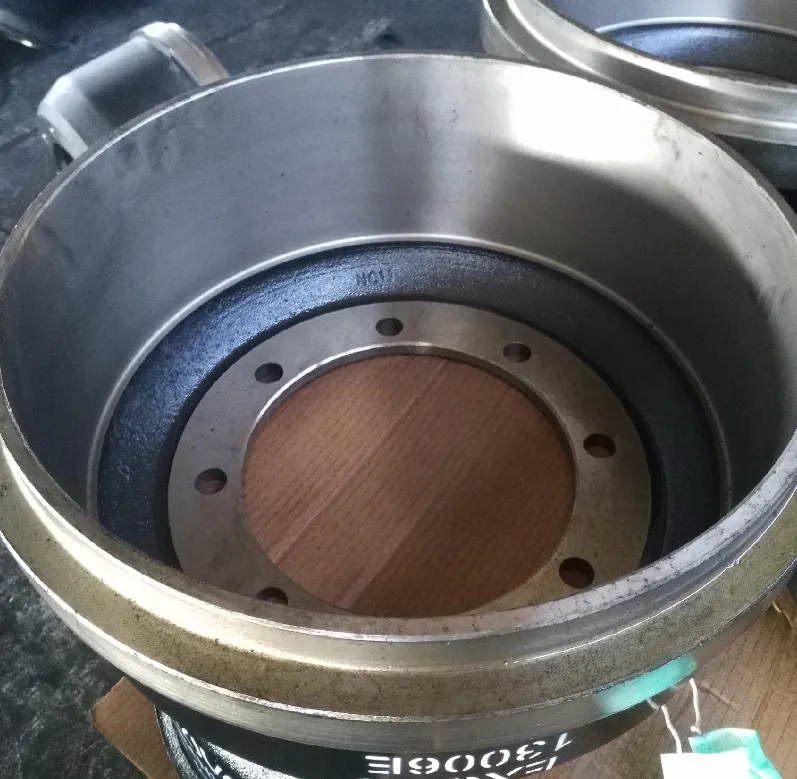Feb . 16, 2025 11:08
Back to list
drum brakes sticking on one side
Experiencing issues with drum brakes sticking on one side is a common but often overlooked automotive problem that can compromise driving safety. This comprehensive guide offers insights into diagnosing, repairing, and preventing this issue while appealing to both novices and seasoned enthusiasts alike.
Engaging with a seasoned professional for a thorough inspection is always recommended for those lacking mechanical expertise. Many accredited auto service centers offer diagnostic checks that delve deeper into brake system performance. Service reports provided by these centers offer authoritative status to consumers, ensuring transparency and professional reassurance. For the hands-on vehicle owner aiming to address the issue at home, a few DIY tips can enhance the efficiency and safety of brake repair work. First, always ensure the vehicle is securely lifted and stable. Remove the drum and inspect all components visually. Look for signs of corrosion, wear, or misalignment. Keep a detailed manual of your vehicle’s brake system handy for reference. Investing in an industry-standard repair kit can also offer trust and reliability. These kits often come equipped with all necessary components and instructions for common brake repairs. Demonstrating proficiency in using these tools not only enhances the lifespan of your brakes but also contributes to a more informed and safer driving experience. Preventative strategies shouldn’t be overlooked either. Regular checks and maintenance every six months can prevent drama down the line. Employing best practices, such as using high-quality brake fluid and replacing it periodically, ensures the hydraulic components function optimally. Adhering to these expert tips not only promises longevity but engenders trust in driving comfort and safety. With the right expertise, authority, and a hint of hands-on experience, drum brake systems can deliver reliable performance without facing the ordeal of sticking on one side. Prioritizing this aspect of vehicle care translates to peace of mind and a safe journey every time the ignition starts.


Engaging with a seasoned professional for a thorough inspection is always recommended for those lacking mechanical expertise. Many accredited auto service centers offer diagnostic checks that delve deeper into brake system performance. Service reports provided by these centers offer authoritative status to consumers, ensuring transparency and professional reassurance. For the hands-on vehicle owner aiming to address the issue at home, a few DIY tips can enhance the efficiency and safety of brake repair work. First, always ensure the vehicle is securely lifted and stable. Remove the drum and inspect all components visually. Look for signs of corrosion, wear, or misalignment. Keep a detailed manual of your vehicle’s brake system handy for reference. Investing in an industry-standard repair kit can also offer trust and reliability. These kits often come equipped with all necessary components and instructions for common brake repairs. Demonstrating proficiency in using these tools not only enhances the lifespan of your brakes but also contributes to a more informed and safer driving experience. Preventative strategies shouldn’t be overlooked either. Regular checks and maintenance every six months can prevent drama down the line. Employing best practices, such as using high-quality brake fluid and replacing it periodically, ensures the hydraulic components function optimally. Adhering to these expert tips not only promises longevity but engenders trust in driving comfort and safety. With the right expertise, authority, and a hint of hands-on experience, drum brake systems can deliver reliable performance without facing the ordeal of sticking on one side. Prioritizing this aspect of vehicle care translates to peace of mind and a safe journey every time the ignition starts.
Latest news
-
Brake Drums for Trucks | OEM-Grade, Factory DirectNewsNov.10,2025
-
High-Performance Brake Drums for Trucks | OEM & ISONewsNov.10,2025
-
Brake Drums Built to Last — OEM-Grade, Balanced for TrucksNewsNov.10,2025
-
Brake Drums for Trucks – OEM-Grade, Durable, Low NoiseNewsNov.10,2025
-
Brake Drums for Trucks | OEM, ISO-Certified, Fast DeliveryNewsNov.10,2025
-
Brake Drums: OEM-Grade, Precision Balanced, Factory DirectNewsNov.03,2025
-
Brake Drums: Heavy-Duty, OEM-Grade, Precision-BalancedNewsNov.03,2025


